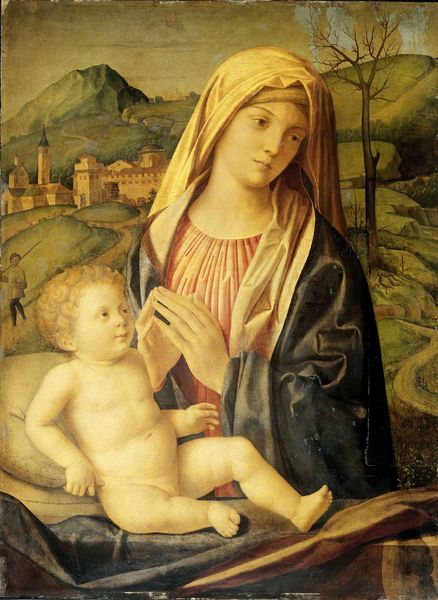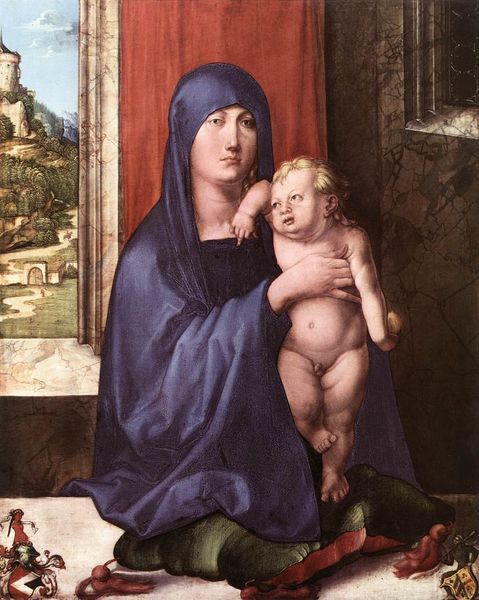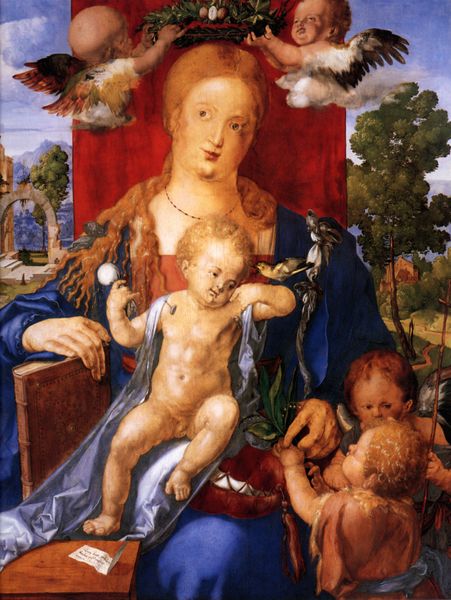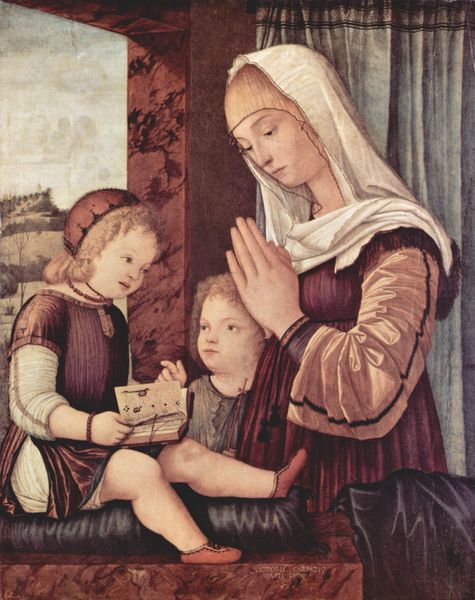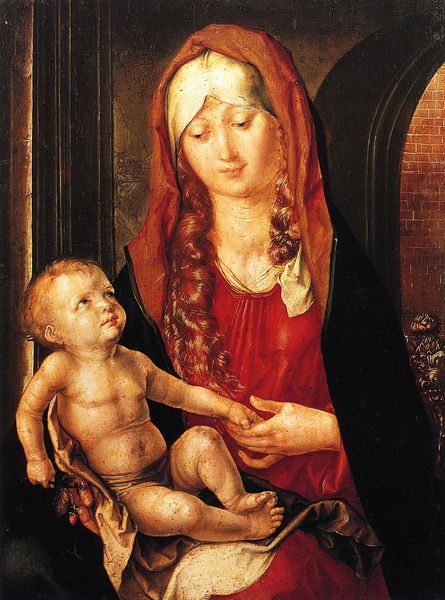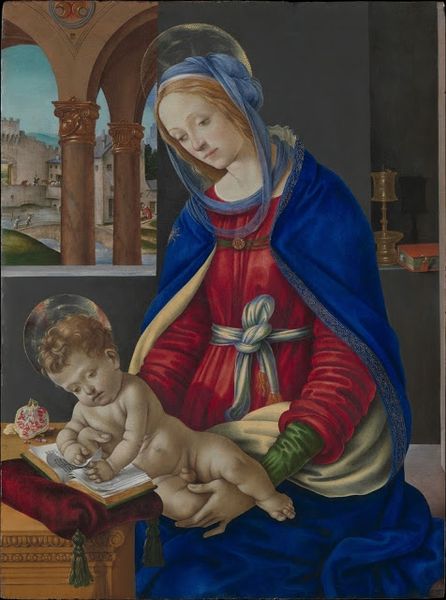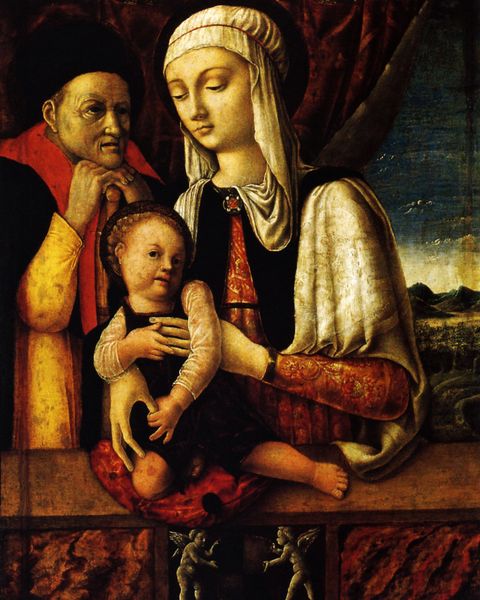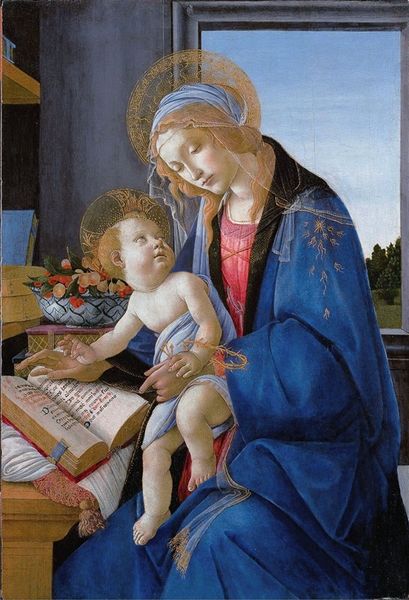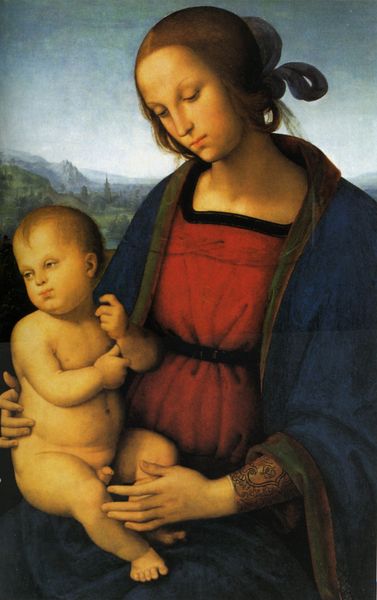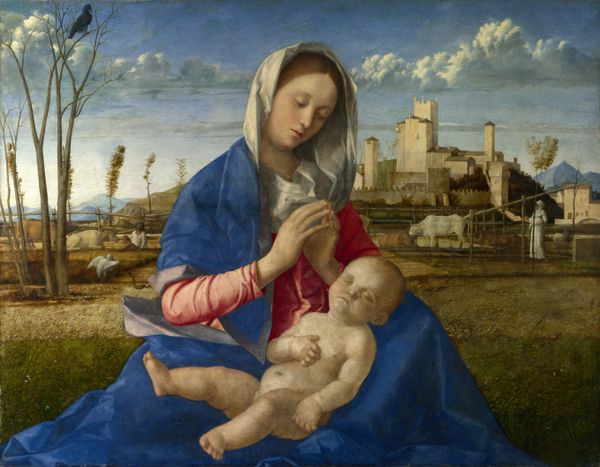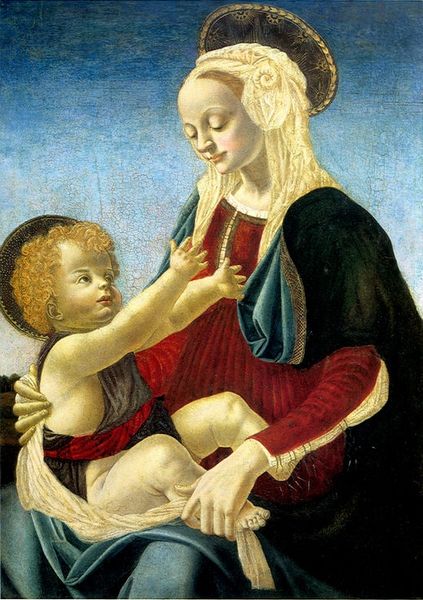
painting, oil-paint
#
portrait
#
high-renaissance
#
painting
#
oil-paint
#
figuration
#
oil painting
#
jesus-christ
#
child
#
portrait head and shoulder
#
christianity
#
italian-renaissance
#
portrait art
#
virgin-mary
#
christ
Dimensions: 76 x 60 cm
Copyright: Public domain
Curator: Here we have Giorgione's “Virgin and Child”, sometimes referred to as the “Tallard Madonna”, created around 1510 using oil paints. You can find it here at the Ashmolean Museum in Oxford. Editor: It has such a still and contemplative feeling. The light on the Virgin’s face is remarkably serene, almost like a hushed premonition hanging in the air, while her bright yellow veil stands out from the cool colors behind her. Curator: Exactly! And it reflects a trend of its time to display a humanized, softer version of religious icons that the viewer might find comforting rather than imposing. Think of that radiant veil as connoting both worldly adornment and heavenly light. Editor: Yet she’s still positioned so formally, almost enthroned, next to a cityscape. Are we meant to see her less as human and more as a symbol of Venice itself? Her isolation, set apart from the city view. Curator: I find it hard not to imagine the symbolic weight of the buildings outside as a sign of Venice as the ‘New Jerusalem.’ However, perhaps you’re picking up on how motherhood, even divine motherhood, can be quite isolating. Editor: The cool colors enhance this tension, too—the cold blues and greens that swaddle Mary versus the soft, fragile flesh of the child. It strikes me as a clever technique for foreshadowing later sorrows. Curator: This piece truly demonstrates Giorgione's talent for creating figures who exude psychological complexity through the subtleties of posture and gaze. Also, the motif of Mary being placed near a window echoes earlier symbolic paintings of Annunciation. Editor: Yes, the painting almost acts as a threshold between private reflection and broader public duties. This highlights the importance of recognizing these figures—like Mary—for not just their suffering, but also their agency. Curator: Seeing art is really about unlocking memories stored in art forms across cultures, how our species repeats itself in finding icons to venerate. Editor: And critically examining them to unravel the complex social messages they convey. There’s always another story beneath the surface.
Comments
No comments
Be the first to comment and join the conversation on the ultimate creative platform.
